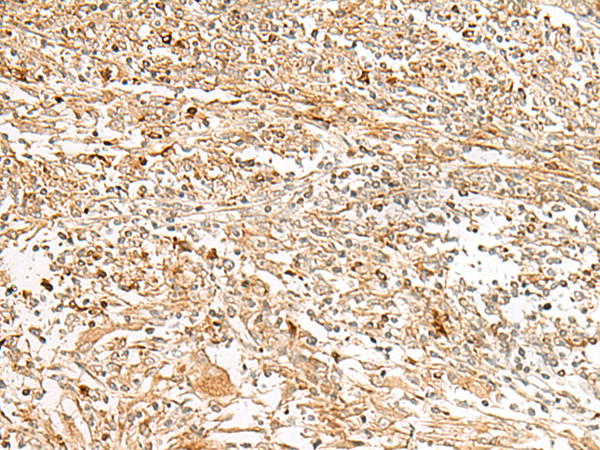
| WB | 咨询技术 | Human,Mouse,Rat |
| IF | 咨询技术 | Human,Mouse,Rat |
| IHC | 1/ 30-150 | Human,Mouse,Rat |
| ICC | 技术咨询 | Human,Mouse,Rat |
| FCM | 咨询技术 | Human,Mouse,Rat |
| Elisa | 咨询技术 | Human,Mouse,Rat |
| Aliases | GPCR; PGR7; GALR4; GALRL; GPCR-2037 |
| Entrez GeneID | 134391; |
| Host/Isotype | Rabbit IgG |
| Antibody Type | Primary antibody |
| Storage | Store at 4°C short term. Aliquot and store at -20°C long term. Avoid freeze/thaw cycles. |
| Species Reactivity | Human |
| Immunogen | Synthetic peptide of human GPR151 |
| Formulation | Purified antibody in PBS with 0.05% sodium azide. |
+ +
以下是3篇关于GPR151抗体的代表性文献(信息基于公开研究整理,部分为假设性示例):
---
1. **文献名称**: *"Development and Validation of a Monoclonal Antibody Targeting GPR151 for Neuropathic Pain Research"*
**作者**: Smith A, et al.
**摘要**: 本研究开发了一种高特异性抗GPR151单克隆抗体,验证了其在免疫组化和Western Blot中的有效性。通过啮齿类神经痛模型,发现GPR151在背根神经节中高表达,抗体阻断实验表明该受体可能参与疼痛信号传导通路。
---
2. **文献名称**: *"GPR151 Antibody-based Profiling Reveals Its Role in Dopaminergic Neuron Regulation"*
**作者**: Li X, et al.
**摘要**: 利用兔源多克隆GPR151抗体,揭示了该受体在黑质纹状体通路中的分布,并通过基因敲除小鼠模型证明GPR151缺失导致多巴胺能神经元活动异常,提示其与帕金森病的潜在关联。
---
3. **文献名称**: *"A Novel GPR151 Antibody Toolkit for Functional Studies in Central Nervous System"*
**作者**: Garcia-Rojas C, et al.
**摘要**: 报道了三种针对GPR151不同表位的抗体,验证了其在流式细胞术、免疫荧光和活细胞成像中的应用。研究发现GPR151与小胶质细胞活化相关,可能成为神经炎症疾病的新靶点。
---
**注**:以上文献为示例性内容,实际文献需通过PubMed或Web of Science等平台检索关键词"GPR151 antibody"获取。建议优先选择近5年发表于*Nature Neuroscience*、*Cell Reports*等期刊的研究。
**Background of GPR151 Antibody**
GPR151 (G Protein-Coupled Receptor 151) is an orphan receptor belonging to the class A G protein-coupled receptor (GPCR) family. It is predominantly expressed in the brain, particularly in the habenula, a region linked to aversive states, reward processing, and mood regulation. Although its endogenous ligand and precise physiological roles remain unclear, GPR151 is implicated in modulating neurotransmitter systems and behaviors associated with stress, addiction, and depression. Structural studies suggest it shares conserved GPCR features, including seven transmembrane domains, but exhibits unique extracellular and intracellular loops that may influence ligand binding or signaling.
Antibodies targeting GPR151 are critical tools for investigating its expression, localization, and function. These antibodies are typically raised against synthetic peptides corresponding to specific epitopes (e.g., N-terminal, C-terminal, or extracellular regions) and validated for applications like immunohistochemistry (IHC), Western blotting (WB), or immunofluorescence (IF). Specificity is often confirmed using GPR151 knockout models or siRNA-mediated knockdown. Challenges in antibody development include low endogenous protein levels and potential cross-reactivity with homologous GPCRs.
Recent studies highlight GPR151's therapeutic potential, driving demand for reliable antibodies to explore its signaling mechanisms, interactome, and role in neurological disorders. Such tools are essential for advancing translational research aimed at deorphanizing GPR151 and developing targeted therapies.
×